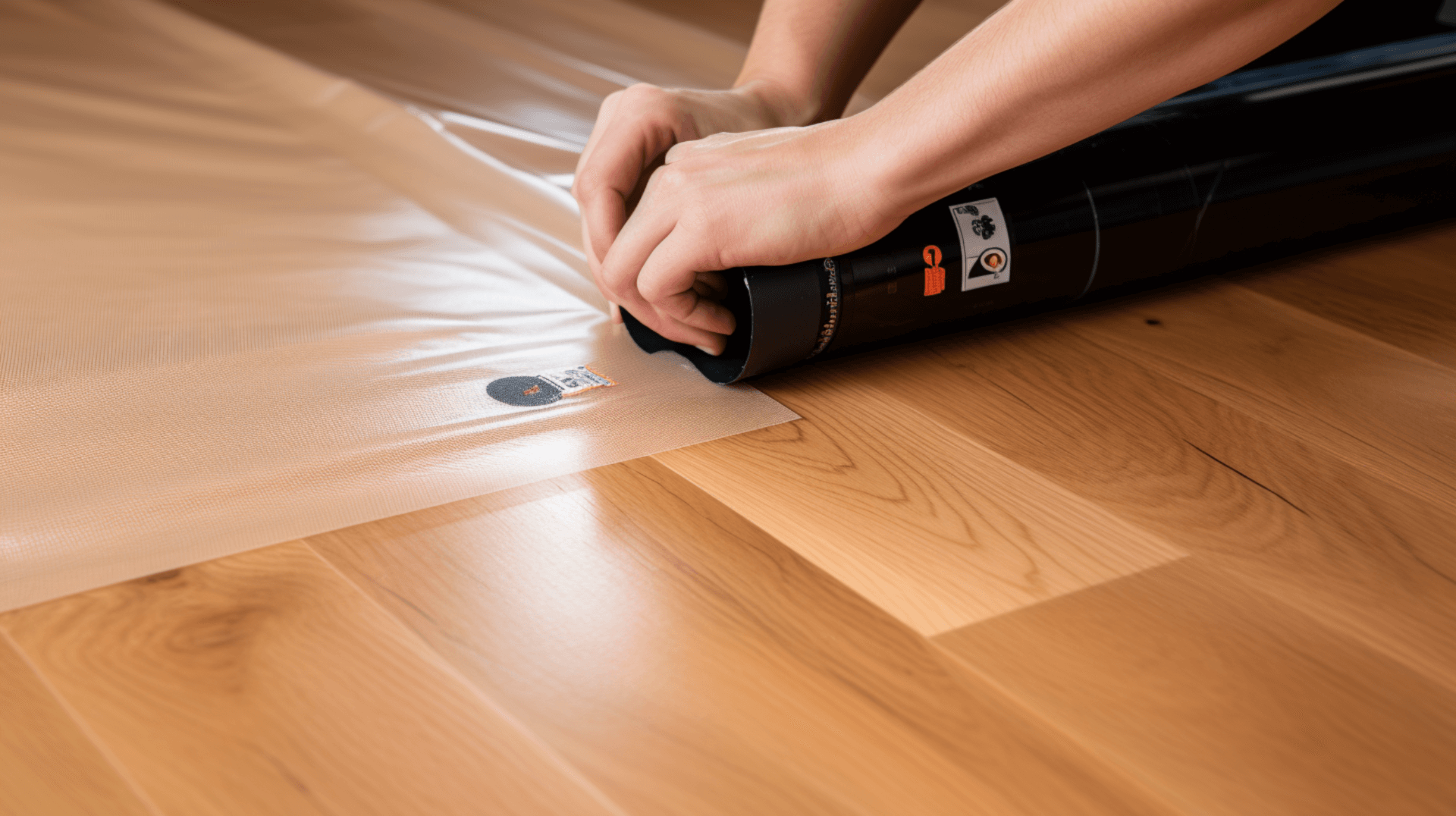Understanding the Risks of Metal Furniture Legs on Wooden Floors
Metal furniture legs can cause significant damage to wooden floors, including scratches, dents, and gouges. These damages can have a negative impact on both the longevity and aesthetics of the floor. Scratches, in particular, can weaken the wood, making it more susceptible to cracks and splinters. Additionally, scratches can diminish the overall appearance of the floor, making it look dull and worn.
Protecting wooden floors from scratches caused by metal furniture legs is crucial. Not only are scratches difficult and expensive to repair, but they can also reduce the value of the floor. Unsightly scratches can detract from the overall appeal of the space. Furthermore, scratches can lead to further damage, such as warping and discoloration, which can be even more challenging and costly to fix.
To safeguard wooden floors from scratches, it is essential to use furniture pads or felt pads on the legs of furniture. These pads act as a cushion, reducing friction between the furniture and the floor. Regularly checking the condition of the pads is also important to ensure they are not worn out. Additionally, maintaining and cleaning the wooden floors regularly can help prevent the accumulation of dirt and debris that can cause scratches. Using appropriate cleaning products and techniques is crucial to avoid damaging the floor.
By taking these preventive measures, homeowners and business owners can protect their wooden floors from the potential damages caused by metal furniture legs.
Identifying the Vulnerability of Different Types of Wooden Floors
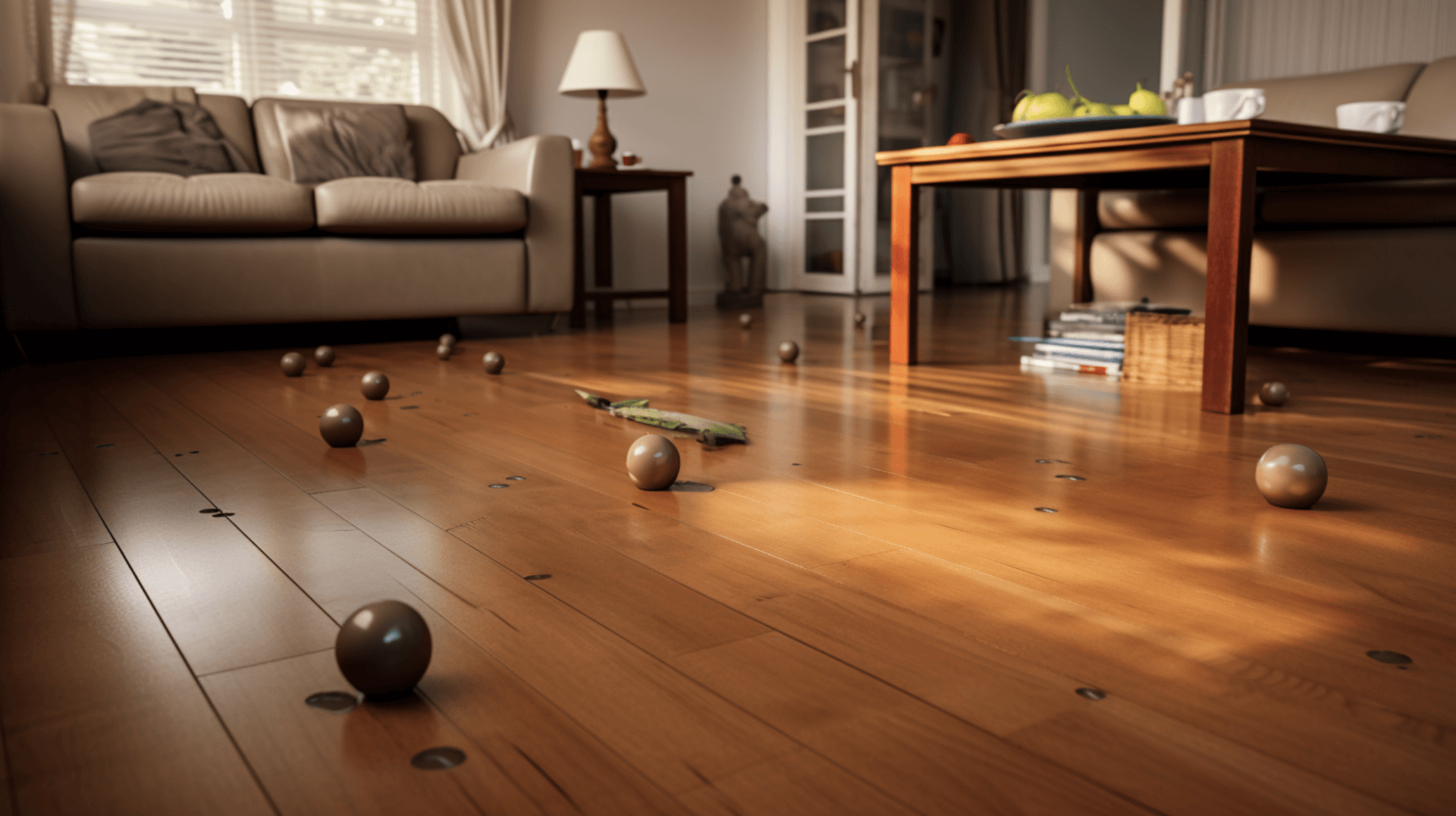
Different types of wooden floors have varying levels of vulnerability to scratches. Hardwood floors, such as oak, maple, and walnut, are more resistant to scratches than softwood floors, such as pine and cedar. Hardwood floors are denser and more durable, making them less susceptible to scratches. Softwood floors, on the other hand, are more prone to scratches due to their softer nature.
The vulnerability of wooden floors to scratches is influenced by several characteristics. Harder woods are more resistant to scratches, while softer woods are more vulnerable. The texture of the wood also plays a role, with smooth surfaces being more likely to show scratches and rough surfaces being less likely to show them. Additionally, the finish of the floor can affect its vulnerability to scratches. Floors with a glossy finish are more likely to show scratches, while floors with a matte finish are less likely to show them.
To protect wooden floors from scratches, it is important to use furniture pads or felt pads on the legs of furniture. Regularly checking the condition of the pads is also important to ensure they are not worn out. Additionally, maintaining and cleaning the wooden floors regularly can help prevent the accumulation of dirt and debris that can cause scratches. Using appropriate cleaning products and techniques is crucial to avoid damaging the floor.
By understanding the vulnerability of different types of wooden floors to scratches, homeowners and business owners can take the necessary steps to protect their floors and maintain their longevity and aesthetics.
The Impact of Metal Furniture Legs on Wooden Floors
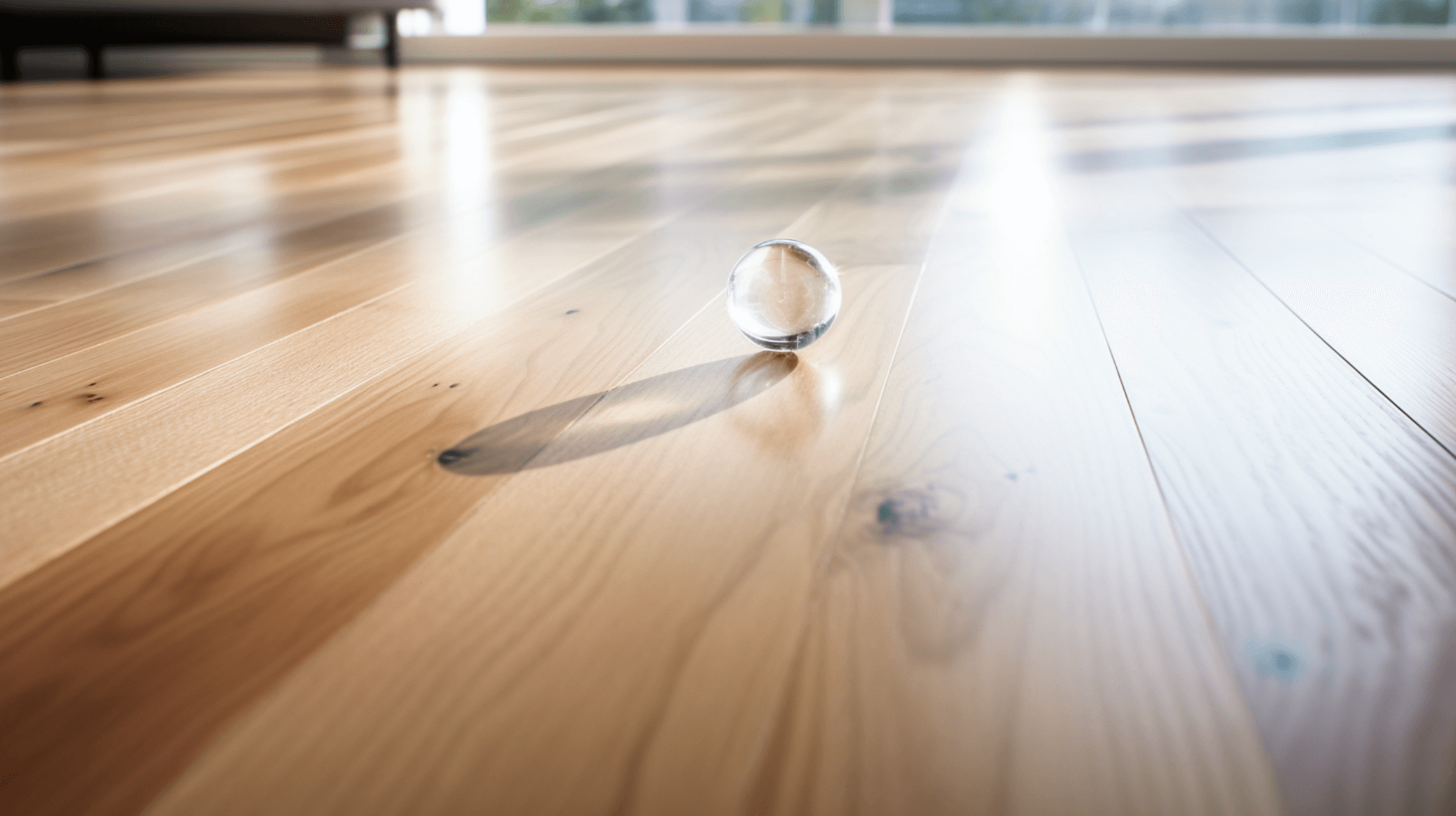
Metal furniture legs can cause significant damage to wooden floors if not properly protected. To prevent scratches and other damages, it is important to follow the manufacturer’s technical information and specifications to ensure that the materials used are certified and suitable for use as furniture legs. Additionally, using furniture pads or felt pads on the legs of furniture is crucial. These pads act as a cushion, reducing friction between the metal legs and the wooden floor. Regularly checking the condition of the pads is also important to ensure they are not worn out and still providing adequate protection.
Maintaining and cleaning the wooden floors regularly is another essential step in preventing damage. Regular cleaning helps to remove dirt and debris that can cause scratches when dragged across the floor. It is important to use appropriate cleaning products and techniques that are safe for the specific type of wooden floor. Following the manufacturer’s recommendations for cleaning and maintenance will help preserve the floor’s longevity and aesthetics.
By understanding the potential impact of metal furniture legs on wooden floors and taking these preventive measures, homeowners and business owners can protect their floors and ensure their durability and visual appeal.
Preparing Your Wooden Floor for Metal Furniture Installation
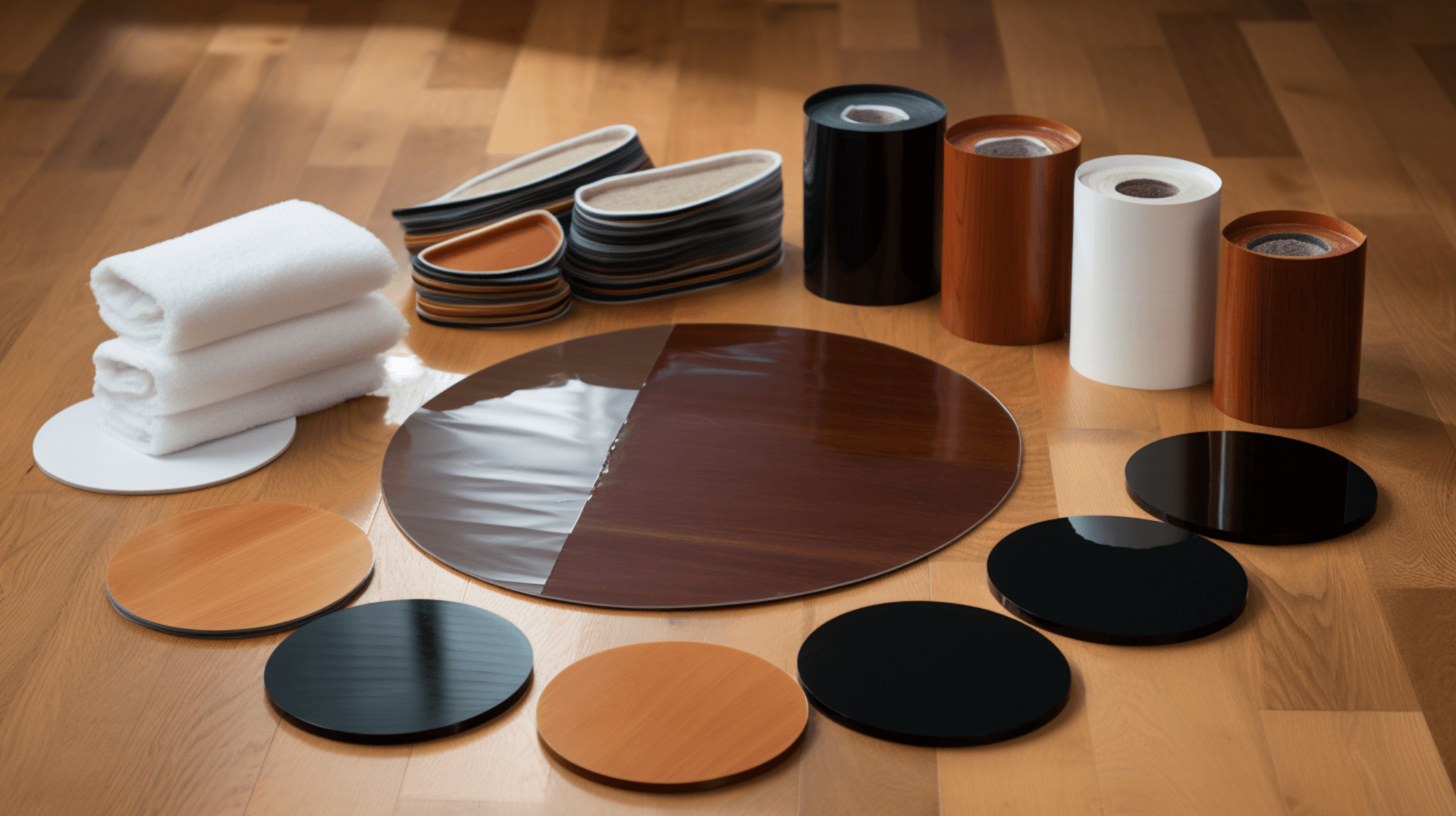
Preparing a wooden floor for metal furniture installation is essential to reduce the risk of scratches and other damages. The first step is to ensure that the floor is clean and free of dirt and debris. This can be done by vacuuming and mopping the floor with a suitable cleaning product. It is important to follow the manufacturer’s recommendations for cleaning and maintenance to ensure that the floor is not damaged.
The next step is to inspect the floor for any existing scratches or damage. If any are found, they should be repaired before installing the furniture. This can be done by sanding the area and applying a suitable wood filler.
Once the floor is clean and free of scratches, it is important to use furniture pads or felt pads on the legs of the furniture. These pads act as a cushion, reducing friction between the metal legs and the wooden floor. Regularly checking the condition of the pads is also important to ensure they are not worn out and still providing adequate protection.
It is also important to verify that the address for installation is correct, and the technician identifies their credentials to the customer. Additionally, it is important to explain to the customer the purpose of the visit and what they can expect during the installation process.
By following these steps and taking the necessary precautions, homeowners and business owners can effectively prepare their wooden floors for metal furniture installation and minimize the risk of scratches and other damages.
Choosing the Right Furniture for Your Wooden Floors
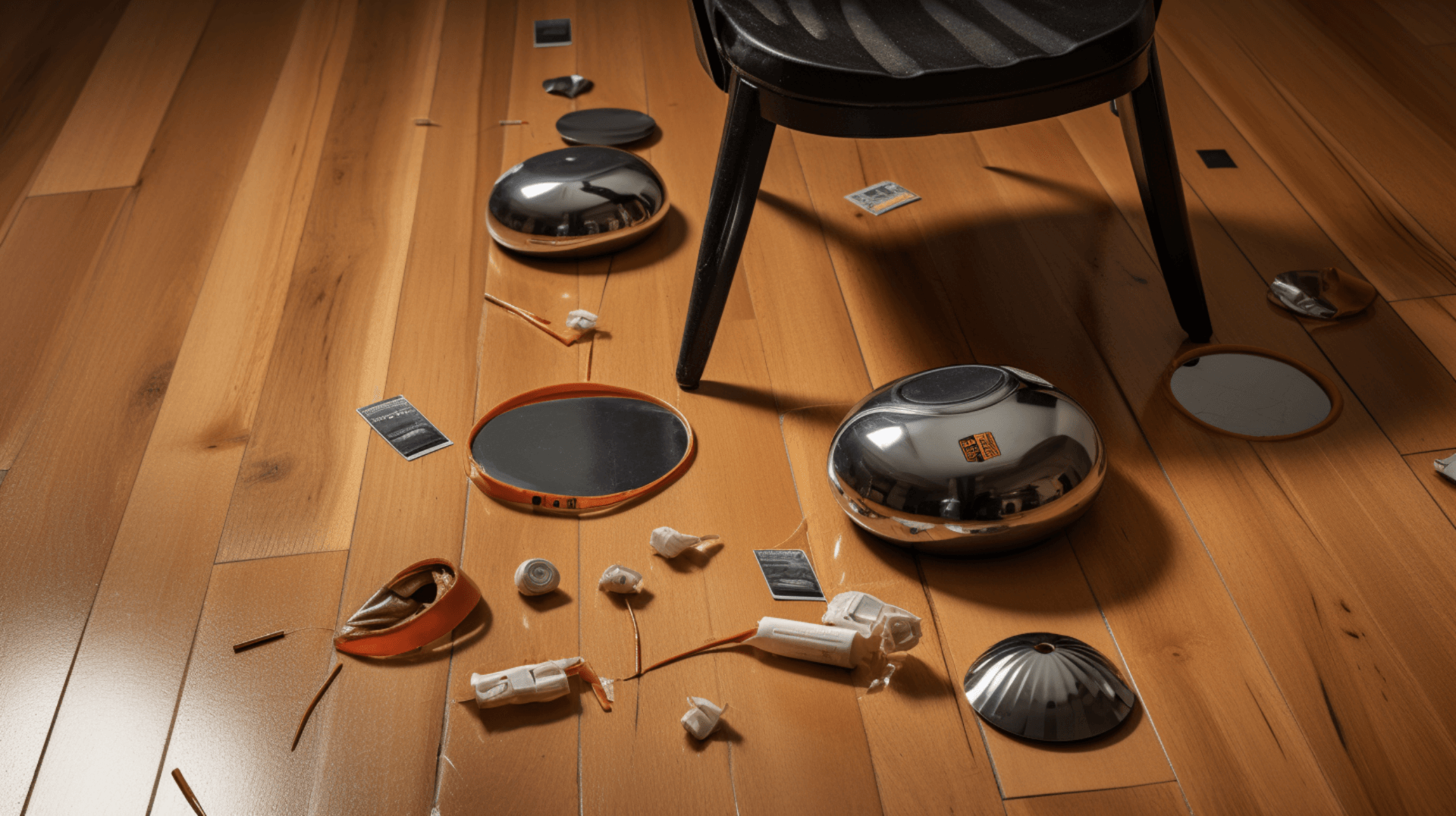
Choosing the right furniture for wooden floors is essential to ensure the longevity and aesthetics of the floor. When selecting furniture, it is important to consider the weight of the furniture, as heavier pieces can cause more damage to the floor. Additionally, the type of furniture legs should be taken into account. Metal furniture legs can cause significant damage to wooden floors if not properly protected, while furniture with rubber or plastic legs are less likely to cause damage. It is also important to consider the type of wood used for the furniture. Hardwood furniture is more resistant to scratches and dents than softwood furniture, making it a better choice for wooden floors. Additionally, the finish of the furniture should be taken into account. Furniture with a glossy finish is more likely to show scratches, while furniture with a matte finish is less likely to show them.
To ensure the floor is adequately protected, it is important to use furniture pads or felt pads on the legs of the furniture. These pads act as a cushion, reducing friction between the furniture legs and the wooden floor. Regularly checking the condition of the pads is also important to ensure they are not worn out and still providing adequate protection. By considering these factors and selecting furniture with appropriate leg materials and finishes, homeowners and business owners can protect their wooden floors and maintain their longevity and aesthetics.
Implementing Preventative Measures to Protect Wooden Floors
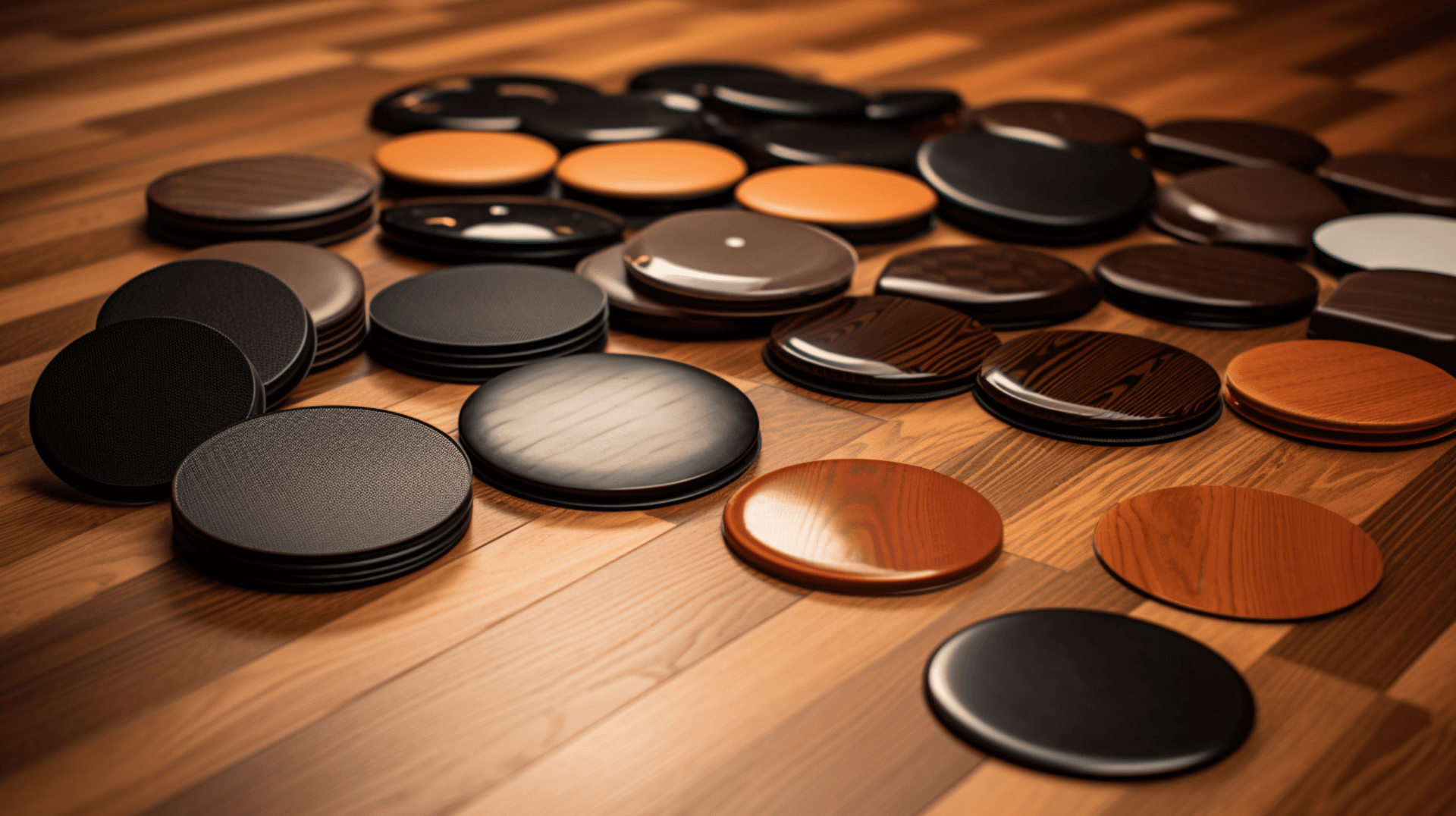
Implementing preventative measures is essential to protect wooden floors from scratches and other damages. The first step is to ensure that the floor is clean and free of dirt and debris. This can be done by vacuuming and mopping the floor with a suitable cleaning product. It is important to follow the manufacturer’s recommendations for cleaning and maintenance to ensure that the floor is not damaged. Additionally, it is important to verify that the address for installation is correct, and the technician identifies their credentials to the customer.
The next step is to inspect the floor for any existing scratches or damage. If any are found, they should be repaired before installing the furniture. This can be done by sanding the area and applying a suitable wood filler. Additionally, any openings or hazards should be appropriately cordoned/barriered.
It is also important to use furniture pads or felt pads on the legs of the furniture. These pads act as a cushion, reducing friction between the metal legs and the wooden floor. Regularly checking the condition of the pads is also important to ensure they are not worn out and still providing adequate protection. Additionally, using rugs or mats in high traffic areas can help protect the floor from scratches and other damages.
By following these preventative measures, homeowners and business owners can effectively protect their wooden floors and maintain their longevity and visual appeal.
Regular Maintenance and Care for Your Wooden Floors
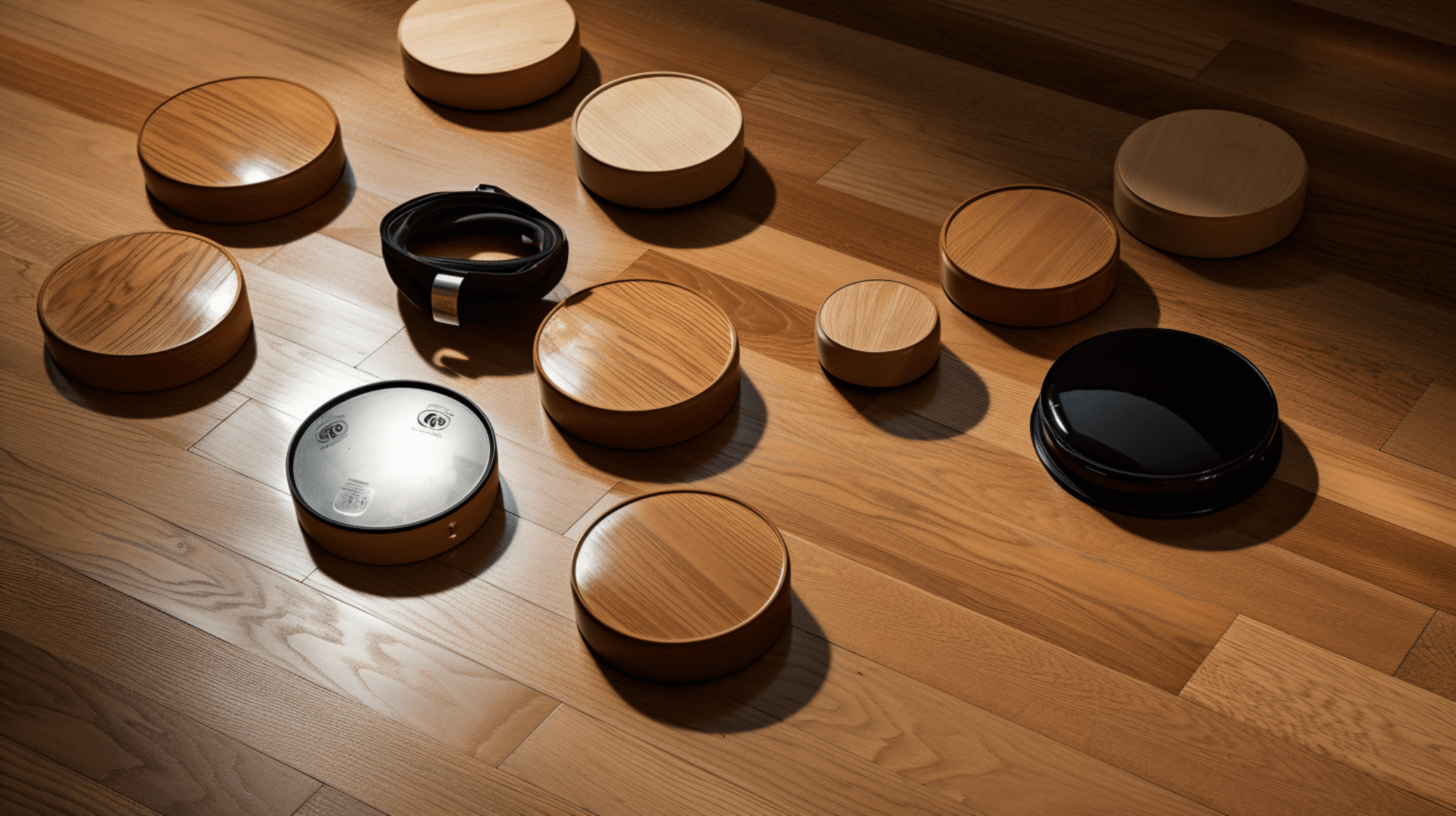
Regular maintenance and care is essential to ensure the longevity and aesthetics of wooden floors. The first step is to ensure that the floor is clean and free of dirt and debris. This can be done by vacuuming and mopping the floor with a suitable cleaning product. It is important to follow the manufacturer’s recommendations for cleaning and maintenance to avoid damaging the floor. Additionally, it is important to verify that the address for installation is correct, and the technician identifies their credentials to the customer.
The next step is to inspect the floor for any existing scratches or damage. If any are found, they should be repaired before installing the furniture. This can be done by sanding the area and applying a suitable wood filler. Additionally, any openings or hazards should be appropriately cordoned or barriered to prevent accidents. It is also important to check the moisture content of the timber joists and ensure that it does not exceed 20%. Timbers are generally understood to be free from the risk of decay below 20% moisture content. Visual inspection of all water or condensate pipes should also be conducted to ensure they are not causing any additional moisture or dampness.
To further protect wooden floors, it is important to avoid tracking debris from other job sites onto the floors, as this can cause scratching and premature wear. Non-breathable floor coverings or floor protectors should also be avoided, as they can trap moisture and damage the wood. In the kitchen, using a breathable area rug can provide an extra layer of protection.
By following these additional steps and taking preventative measures, such as avoiding debris and using appropriate floor coverings, homeowners and business owners can effectively protect their wooden floors and maintain their longevity and visual appeal.
Repairing Scratches on Wooden Floors: When to DIY and When to Call a Professional
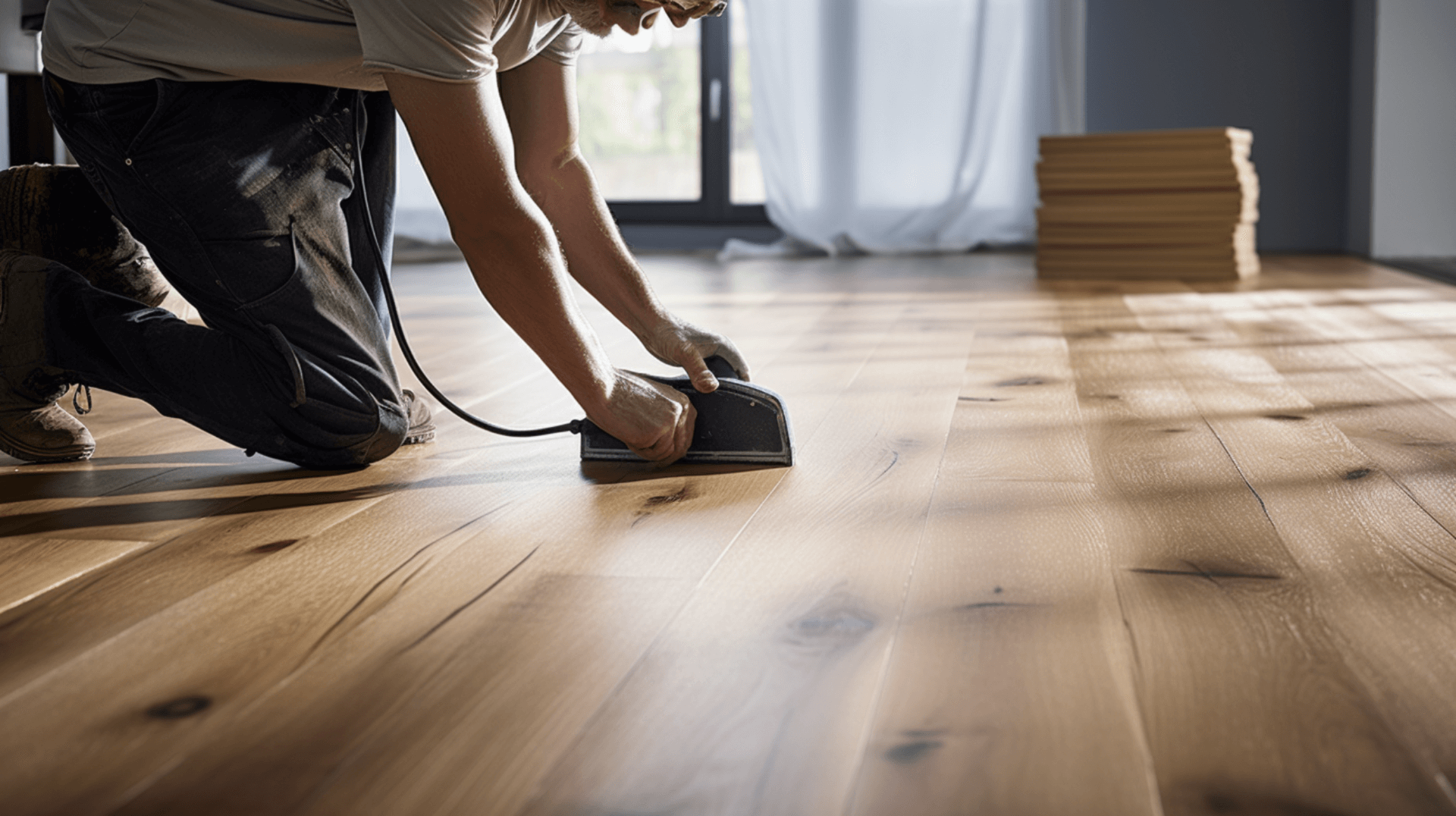
Repairing scratches on wooden floors can be a daunting task, but with the right knowledge and tools, it can be done at home. Minor scratches can be repaired with a wood filler, which can be purchased at most hardware stores. The wood filler should be applied to the scratch and allowed to dry before sanding it down to match the surrounding area. It is important to use a fine-grit sandpaper to avoid damaging the wood.
For more severe scratches, it is best to call a professional. Professional scratch repair services can provide a more thorough repair, as we have access to specialized tools and products. Additionally, we can provide advice on how to prevent future scratches and maintain the longevity of the floor. Professional scratch repair services can also provide advice on the best products to use for cleaning and maintenance.
Before attempting to repair scratches, it is important to inspect the floor for any existing scratches or damage. If any are found, they should be repaired before installing the furniture. Additionally, any openings or hazards should be appropriately cordoned or barriered to prevent accidents. It is also important to check the moisture content of the timber joists and ensure that it does not exceed 20%. Timbers are generally understood to be free from the risk of decay below 20% moisture content. Visual inspection of all water or condensate pipes should also be conducted to ensure they are not causing any additional moisture or dampness.
By following these steps and taking preventative measures, such as repairing existing scratches and checking moisture content, homeowners and business owners can effectively repair scratches on their wooden floors and maintain their longevity and visual appeal.
The Role of Professional Wooden Floor Sanding in Scratch Prevention and Repair
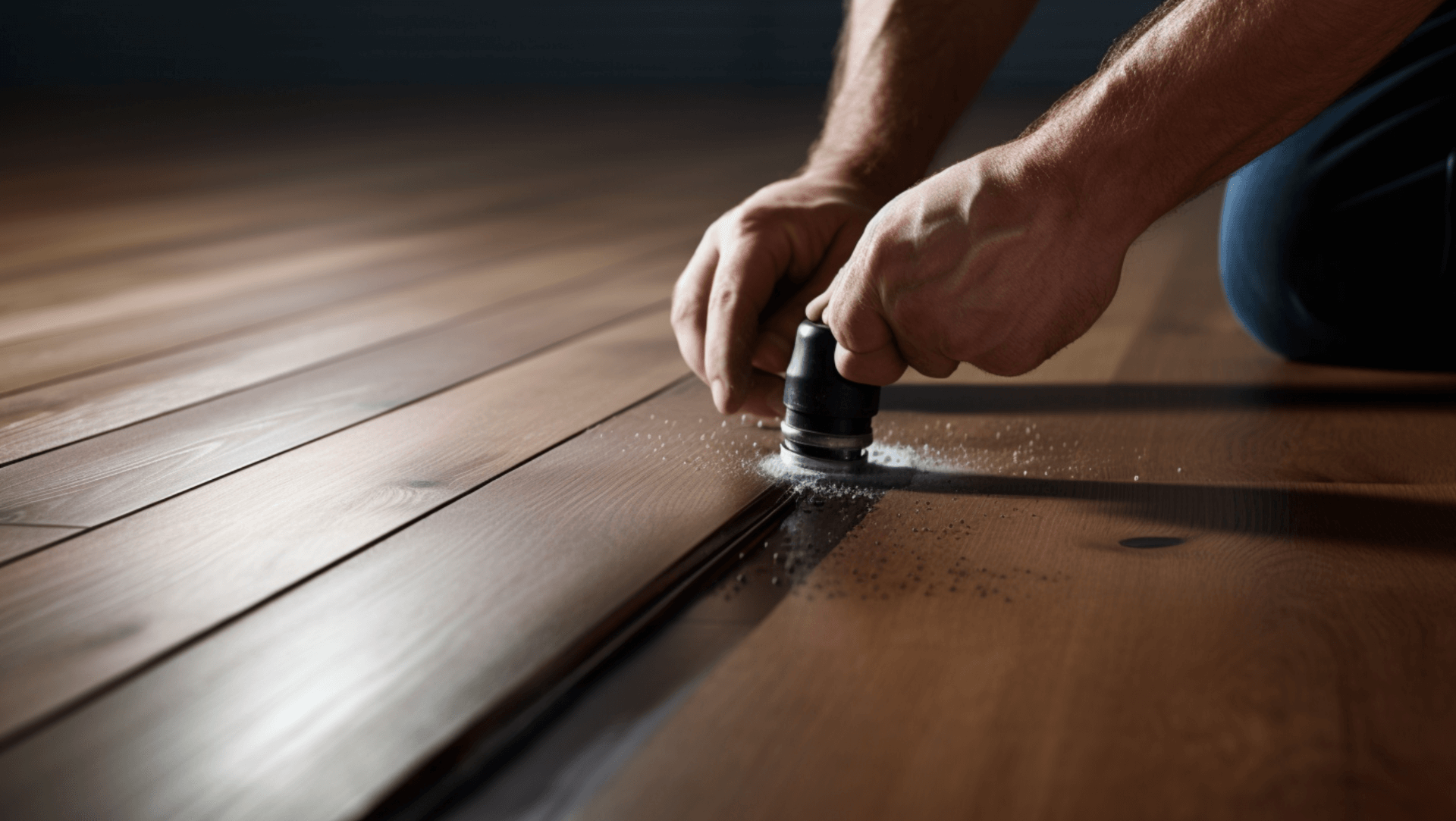
Professional floor sanding is an effective way to prevent and repair scratches on wooden floors. Floor sanding involves the use of specialized tools and products to remove the top layer of the floor, revealing a fresh layer of wood. This process can help to remove existing scratches and prevent future scratches by providing a smooth, even surface.
GJP Floor Sanding is a professional floor sanding company that offers a range of services, including scratch prevention and repair. Our experienced team of professionals uses the latest tools and techniques to ensure that the job is done right. We also provide additional services such as staining and sealing to help protect the floor and maintain its longevity.
By utilizing professional floor sanding services, homeowners and business owners can effectively prevent and repair scratches on our wooden floors. The process removes scratches, restores the floor’s original finish, and provides a smooth and even surface. GJP Floor Sanding is a reputable company that offers expertise and quality results in floor sanding and restoration. We have the knowledge and experience to handle various types of wooden floors and can provide tailored solutions to meet the specific needs of our customers.
In addition to scratch prevention and repair, GJP Floor Sanding also offers staining and sealing services. These services help to protect the floor from moisture, stains, and other damages, further prolonging its life and maintaining its visual appeal. With our range of services and commitment to quality, GJP Floor Sanding is a reliable choice for professional floor sanding and maintenance.
LongTerm Strategies for Protecting Your Wooden Floors
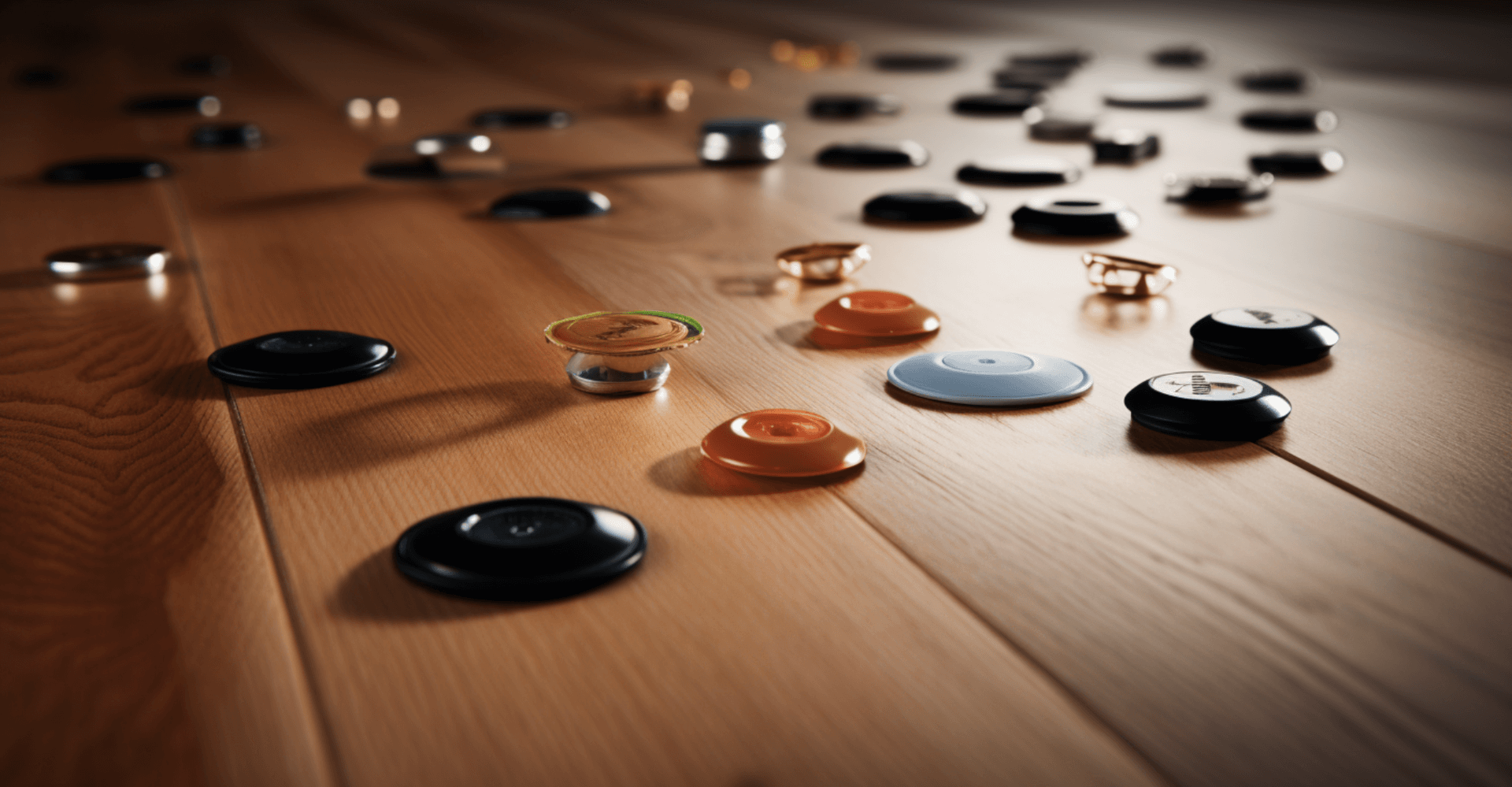
Maintaining the beauty and integrity of wooden floors requires a long-term strategy. Regular inspections are essential to ensure that the floor is clean and free of dirt and debris. This can be done by vacuuming and mopping the floor with a suitable cleaning product. Additionally, it is important to inspect the floor for any existing scratches or damage. If any are found, they should be repaired before installing the furniture. Additionally, any openings or hazards should be appropriately cordoned or barriered to prevent accidents. It is also important to check the moisture content of the timber joists and ensure that it does not exceed 20%. Timbers are generally understood to be free from the risk of decay below 20% moisture content. Visual inspection of all water or condensate pipes should also be conducted to ensure they are not causing any additional moisture or dampness.
Making lifestyle changes can also help to protect wooden floors. It is important to avoid tracking debris from other job sites onto the floors, as this can cause scratching and premature wear. Non-breathable floor coverings or floor protectors should also be avoided, as they can trap moisture and damage the wood. In the kitchen, using a breathable area rug can provide an extra layer of protection. Felt pads on furniture legs can help to reduce the risk of scratches and dents.
By implementing these long-term strategies and making necessary lifestyle changes, homeowners and business owners can effectively protect their wooden floors, ensuring their longevity and visual appeal.
Expert Advice: Tips and Tricks from GJP Floor Sanding Professionals
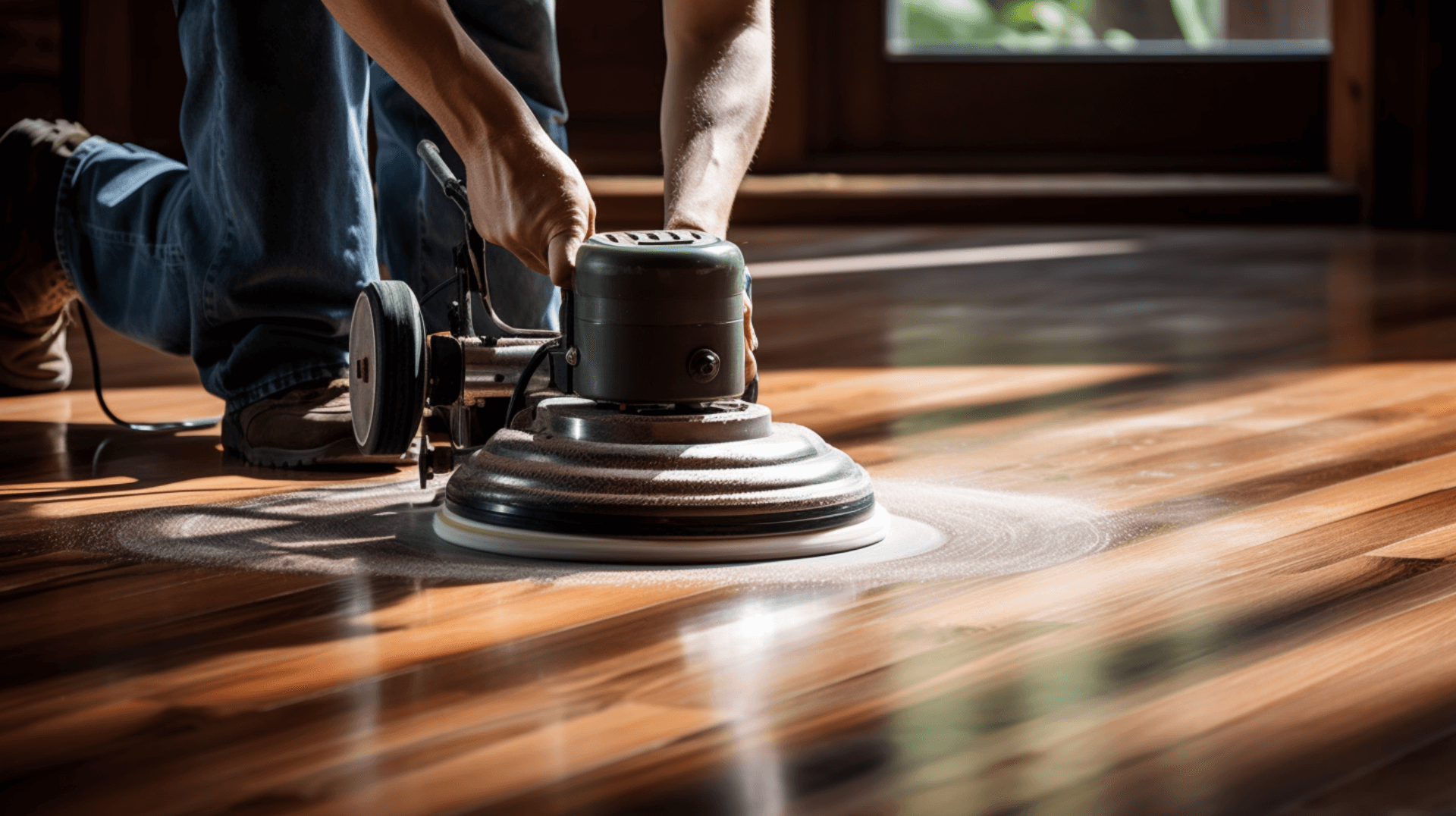
GJP Floor Sanding professionals have a wealth of knowledge and experience when it comes to maintaining wooden floors. We offer expert advice on how to protect and maintain the beauty of wooden floors. Our tips and tricks include regular inspections to ensure that the floor is clean and free of dirt and debris, as well as checking the moisture content of the timber joists and ensuring that it does not exceed 20%. Additionally, we recommend avoiding non-breathable floor coverings or floor protectors, as we can trap moisture and damage the wood, and using felt pads on furniture legs to reduce the risk of scratches and dents. We also suggest avoiding tracking debris from other job sites onto the floors, as this can cause scratching and premature wear.
GJP Floor Sanding professionals can also help in maintaining the beauty of your wooden floors. We offer a range of services, including scratch prevention and repair, staining and sealing, and more. Our experienced team of professionals uses the latest tools and techniques to ensure that the job is done right. We can also provide advice on the best products to use for cleaning and maintenance, as well as the installation of insulation to comply with current relevant national building regulations. With our expertise and commitment to quality, GJP Floor Sanding professionals are a reliable choice for maintaining the beauty and integrity of your wooden floors.
Contact Us: Let GJP Floor Sanding Help Protect Your Wooden Floors
GJP Floor Sanding is the perfect choice for protecting and maintaining your wooden floors. We offer a range of services, including scratch prevention and repair, staining and sealing, and more. Our experienced team of professionals uses the latest tools and techniques to ensure that the job is done right. We also provide additional services such as staining and sealing to help protect the floor and maintain its longevity.
GJP Floor Sanding professionals have a wealth of knowledge and experience when it comes to maintaining wooden floors. We offer expert advice on how to protect and maintain the beauty of wooden floors. Our tips and tricks include regular inspections to ensure that the floor is clean and free of dirt and debris. We also recommend checking the moisture content of the timber joists and ensuring that it does not exceed 20% to prevent the risk of decay. Additionally, we advise against using non-breathable floor coverings or floor protectors, as these can trap moisture and damage the wood. Instead, we suggest using felt pads on furniture legs to minimize the risk of scratches and dents. We also emphasize the importance of avoiding tracking debris from other job sites onto the floors, as this can cause scratching and premature wear. Furthermore, we can provide guidance on the best products to use for cleaning and maintenance, ensuring that you have the right tools to keep your wooden floors in top condition.
With our extensive knowledge, experience, and commitment to quality, GJP Floor Sanding is the ideal choice for all your wooden floor maintenance and repair needs. Contact us today to benefit from our expertise and ensure the longevity and visual appeal of your wooden floors.
